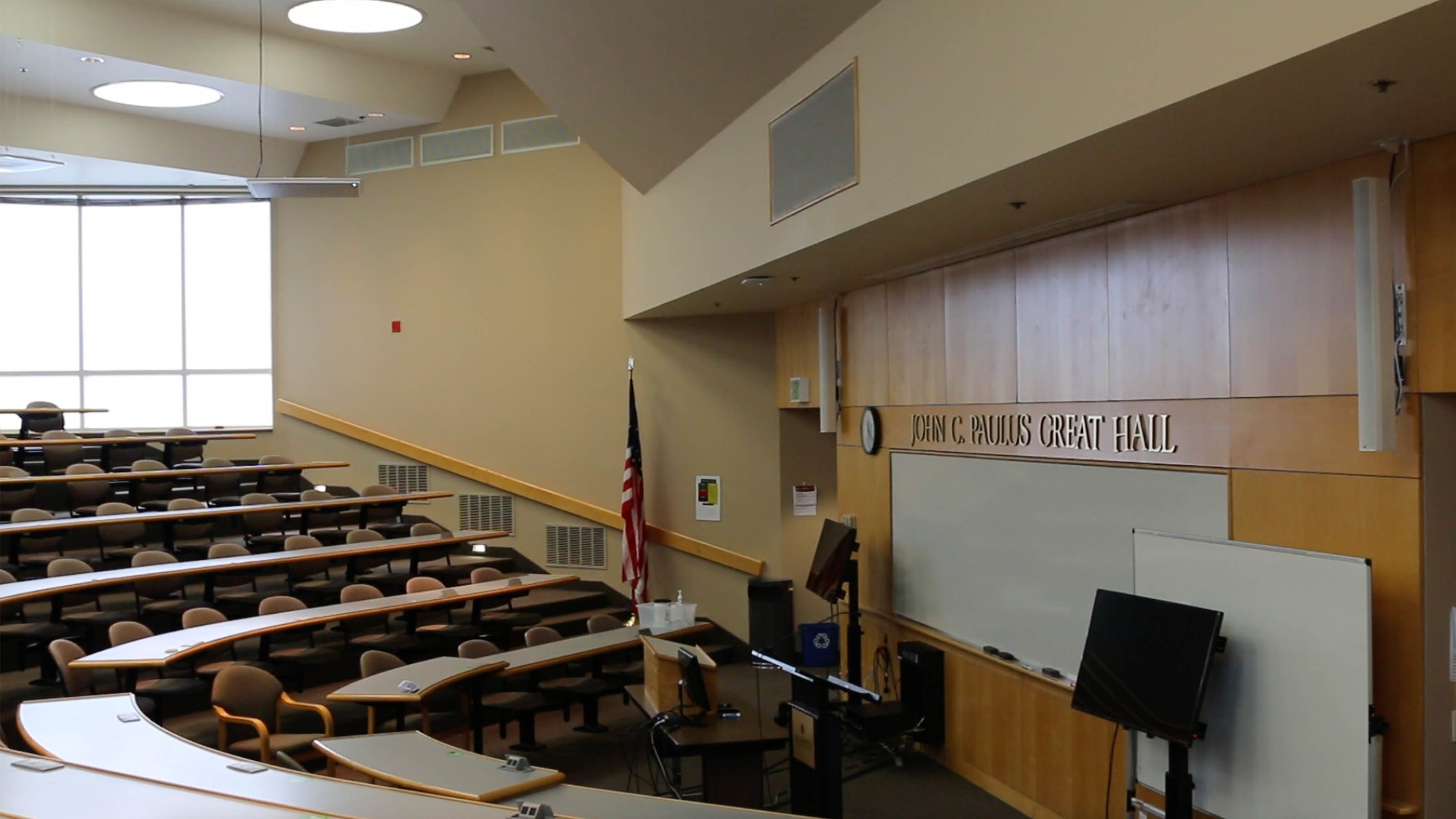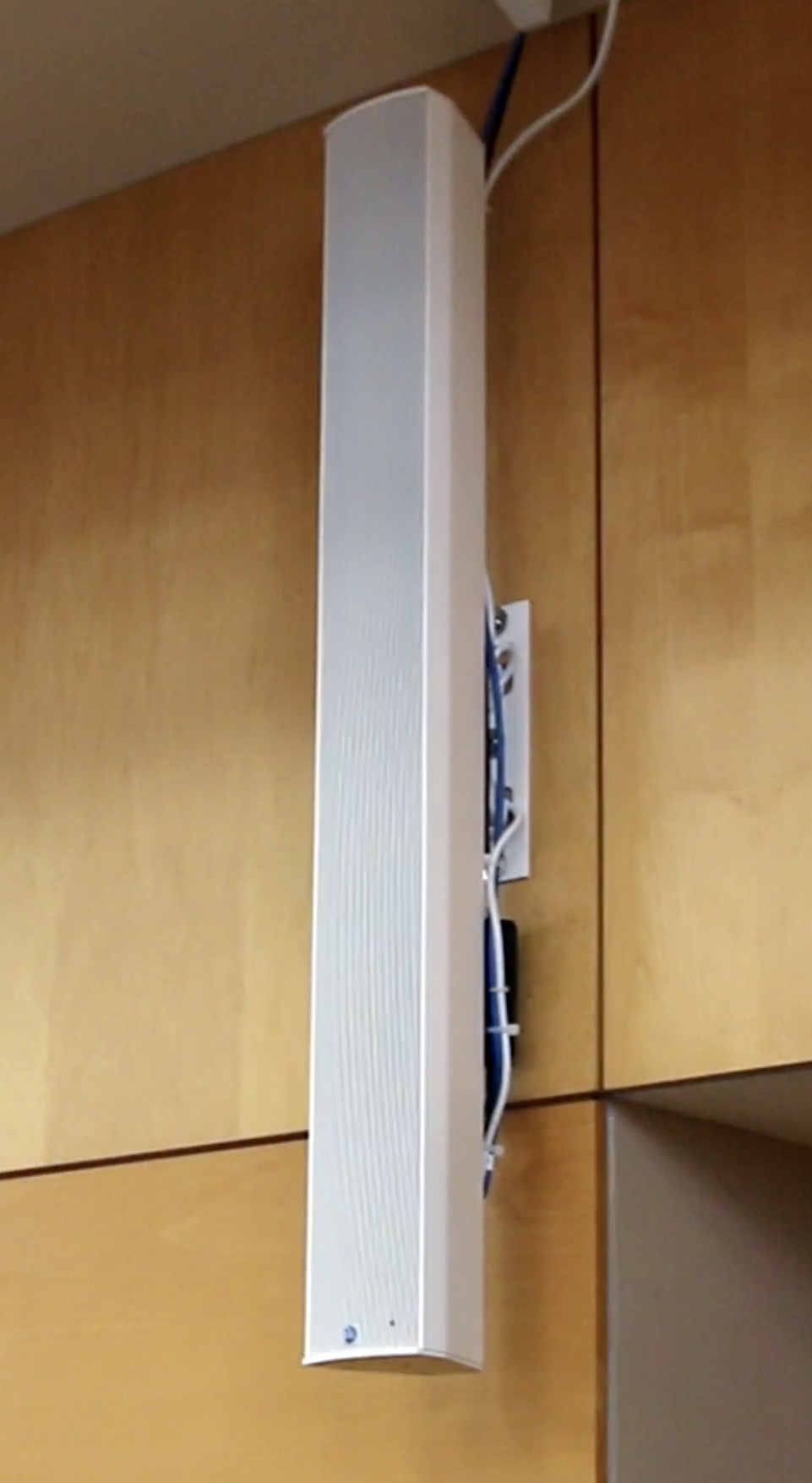How to Choose the Right Loudspeaker for Speech Intelligibility
What solution delivers the best results for your entire space?

Speech intelligibility is paramount whether a class is in-person, virtual, or hybrid. If students can’t hear or understand the instructor, their ability to learn and retain information is compromised. The larger the room, the more critical speech intelligibility becomes. In small classrooms, instructors may be able to speak louder to reach the back of the room, but that’s not a viable option in a lecture theater, cafeteria, or gymnasium.
Intelligibility plays a huge role in learning and information retention. If you’re in a reverberant space like a church or train station and all you hear is muffled speech, you’ll quickly give up trying to understand what’s being communicated. The same is true for students: If they can’t hear and understand the instructor, they’ll zone out. The higher the speech intelligibility, the easier it is to retain information and understand the topic of conversation.
Sound Transmission Index
Simply put, speech intelligibility is the percentage of speech a listener can understand. Intelligibility is affected by the volume level and quality of the speech signal, the type and level of background noise, room reverberation, and more. It’s an essential consideration for loudspeaker selection.
While multiuse spaces like auditoriums, cafeterias, and gymnasiums often feature music reproduction, they always have spoken word, so the sound system must ensure the message is clear. The only way to provide an accurate speech intelligibility rating is to measure it in the room (which is highly recommended). A rule of thumb for the threshold of 100% intelligibility is usually a signal-to-noise ratio (SNR) of 12 dB, meaning the signal should be roughly four times louder than the noise floor.

The next best thing to having data measurements is understanding the details of speech intelligibility and the Sound Transmission Index (STI). STI is a numeric representation measure of communication channel characteristics whose value varies from 0 (bad) to 1 (excellent).
STI predicts the likelihood of syllables, words, and sentences being comprehended. An STI of at least 0.6 throughout the seating area is recommended for education facilities. For the listener, this equates to roughly 75% of syllables being understood, 90% of words understood, and 95% of sentences understood.
A daily selection of the top stories for AV integrators, resellers and consultants. Sign up below.
Beam steering technology allows loudspeakers to tightly control the sound and place it where needed—on the students—while keeping it away from other surfaces that may cause echoes and reflections. Beam steering loudspeakers are typically much taller than wide and mounted flat against the wall since the beams are digitally steered. For that reason, they’re more cost-effective than flying a line array and much easier to blend into the building’s architecture. Realistically, the fewer loudspeakers deployed, the fewer visual distractions for students. If the loudspeaker manufacturer supports custom paint schemes for their cabinets, so much the better for having them “disappear” and not act as a visual distraction.
Willamette University Case Study
Founded in 1842, Willamette University in Salem, OR, is the oldest university in the Western United States. The school’s 120-seat Paulus Lecture Hall in the College of Law needed a sound system upgrade to facilitate better remote and in-person lectures and discussions. With a fan-shaped layout and stadium-style seating, they needed a solution that provided granular control over where the sound was directed.
The university’s AV team selected a set of Renkus-Heinz Iconyx Compact ICC12/3 arrays because of the extremely challenging room. The ICC12/3 offers the quality and flexibility of an ICONYX array but with a 40% smaller footprint. The reduced footprint allows the ICC to blend into the most architecturally sensitive spaces, while the high vertical directivity of the ICC12/3 can tame the most challenging acoustics environments.
An integrated 12-channel digital amplifier and DSP system power the loudspeaker’s 3-inch, full-range drivers. The professors can now use lapel mics without concern about feedback in the room, while remote students can hear clearly because the audio is properly controlled.
[Here's Renkus-Heinz's Solution for 42-Foot-High Ceilings and Tricky Acoustics]
Every listener deserves the clearest sound possible, especially in educational environments. The audio quality needs to help create immersive experiences for students. When students struggle to understand the instructor or program audio, it reduces their understanding of the topic and increases their audio fatigue, creating a less-than-optimal learning environment. Using loudspeakers with high directivity, such as digitally steerable arrays, provides granular control over where the audio is distributed.
Garrison Parkin is the western regional sales manager for Renkus-Heinz.

